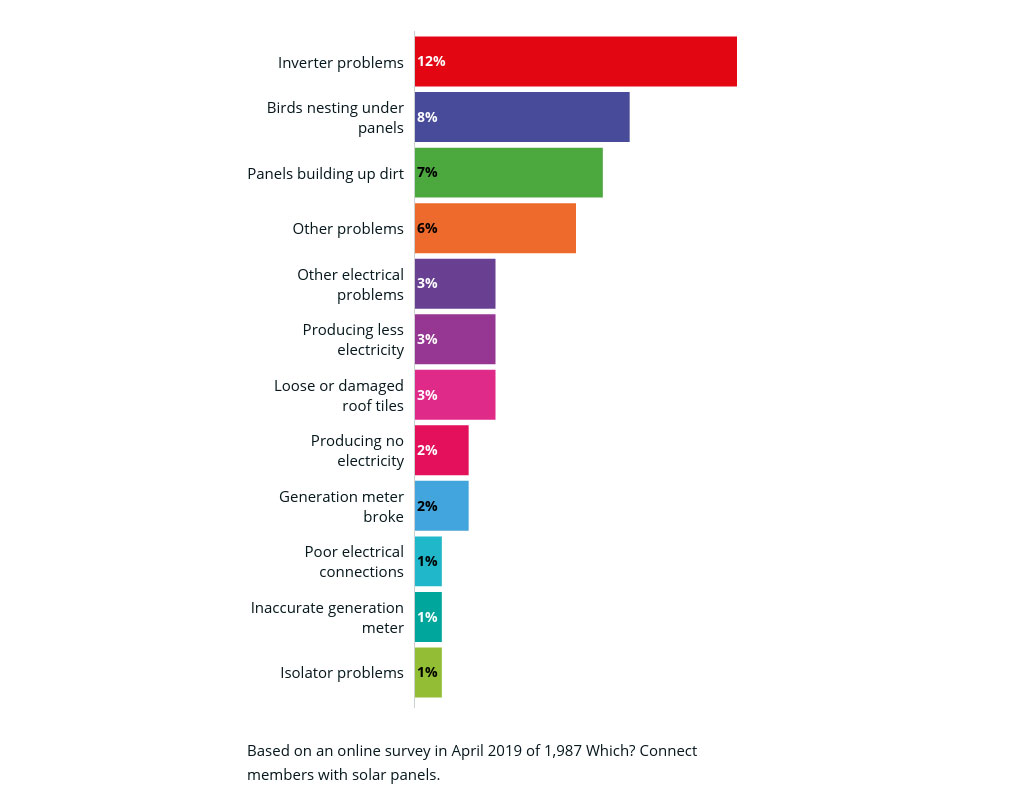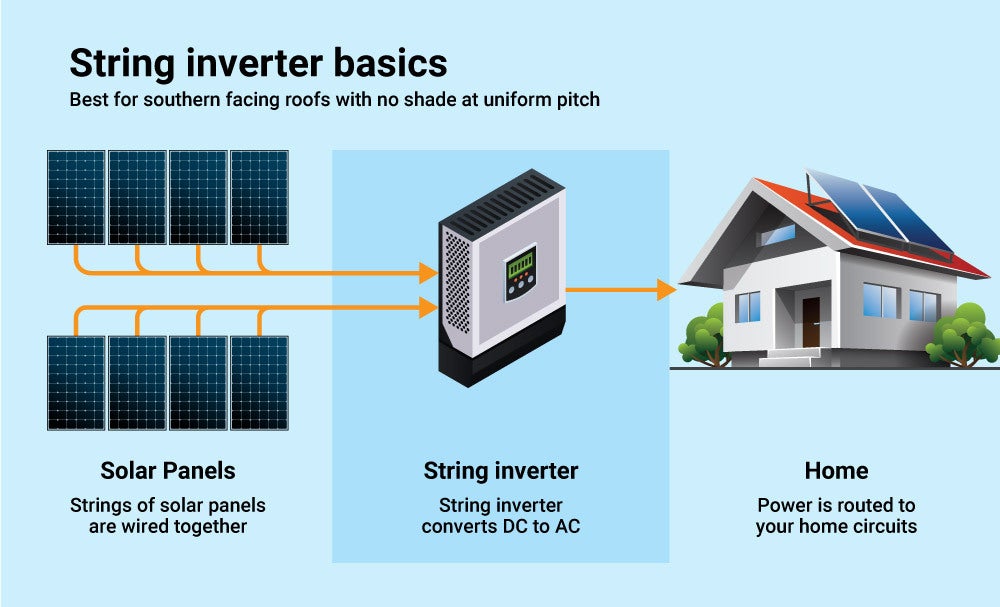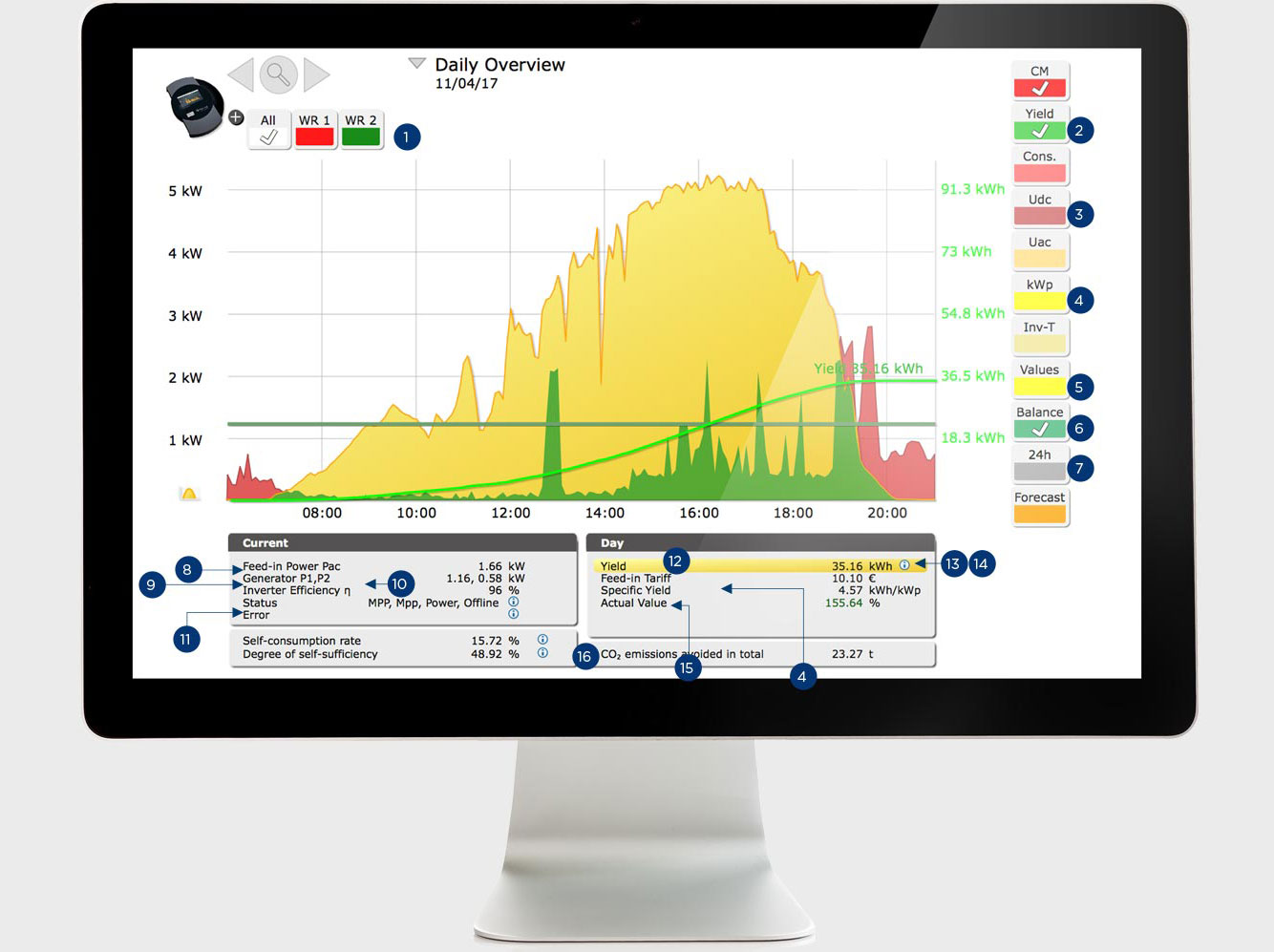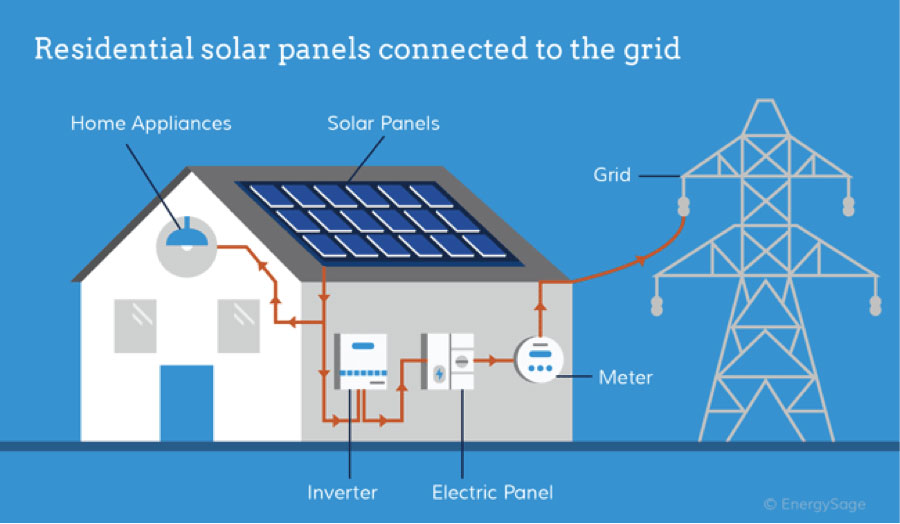Whenever one starts thinking of solar power heating systems, there is much hidden in terms of the functionality and the best choice. Potential buyers should always consult experts. They will determine the right heater and then explain their key features. Today, this guide will reveal the top solar inverters, an integral part of any solar system. Check what may fit your existing heater or what to pay attention to for further purchase.
What Are the Key Solar Inverter Problems?
Let’s first identify what the best inverter for solar is. It is an integral, crucial part of each solar heating system. It works by generating Direct Current (DC) and converting it into Alternating Current (AC). The latter one is the form of electricity used in your housing. Then, such a part works by selecting the right combination of panel voltage and current (which are fluctuating) to generate enough power.
Like with other units and devices, there might be some issues in the solar inverters running. Looking ahead, the issues are quite expensive to repair. For instance, users might come across problems because of changing weather conditions. It is because the inverters are located outside the systems. It is better to allocate the system with inverters in a sheltered place. It can be a carport, garage, somewhere avoiding the direct sunlight. So, the major malfunctions are the ones due to weather conditions.

Then, solar systems may develop issues internally. For example, a malfunction from the technical side of the inverter. Still, they are rare if your unit has a long lifespan and you have just bought it. At least for the first 10 years, you may likely enjoy its smooth functionality. Otherwise, to prevent the system shutdown, consider hiring specialists from the maintenance service. For your considerations, the problems which you may face and need to hire a specialist for are:
- Disconnection of loads;
- The battery does not run;
- Fault lines;
- Array Fuse Short Circuits.
Do not take them for granted, or a replacement of the whole system with solar inverters is unavoidable.
Major Types for Your Solar Power Inverter
Now, let’s move to the best solar inverter types.
- String Solar Inverters
When you wonder about the most common solar inverter, it is a description of a String one. Behind the name hides the functionality. The inverters are linked to a certain string of solar panels in series. It converts the Direct Current energy into housing usable Alternating Current. The connection may take place in different ways. For example, a solar array can consist of at least 15 solar panels with 250Wp each. Then, each panel is connected to strings. You can find such a type in Europe and Asia the most.
- Hybrid Inverters
The next type is hybrid or battery one. It is a combination of the best solar power inverter with a battery as one unit. It is a good option if you have regular power issues. In the case of a blackout, it will provide basic power support until the issue is over. The popularity behind this type is its relative cheapness compared to string inverters.

- Off-Grid Solar Inverters
This type is also called a stand-alone system. It requires potent battery inverters with separate chargers. They can form a setup with either AC or DC solar systems. Today, experts also convert such models into multi-mode devices. Then, it is popular because of its relative eco-friendliness and sustainability. You minimize the carbon footprint.
- Micro Solar Inverters
Last but not least, micros inverters. They are compact because they are attached to individual systems directly. They will fit complex roof designs and locations linked to extreme shading. Even the compact size does not prevent you from their high costs. You will spend more than with other inverters if you choose a good model.
Solar Panel Inverter Choosing Criteria
If you decide to buy one, you should understand the factors to pay attention to when selecting. As of now, consider the following criteria:
- Quality, Trustworthiness of the Brand. Logically to assume, you should stick to popular brands of inverters for solar panels. They, in turn, will mean high-quality, longer and better lifespan, and a great warranty. The latter is extremely important if you live in areas with fluctuating weather conditions;
- Customer Service. When you buy PV solar inverters, you should receive a proper consultation or even guidance from experts. In case of any inquiries, the seller or manufacturer itself should address them;
- Warranty. Ensure your inverter has a good warranty to rely on. At least 10+ years should be there. Otherwise, you will simply come across huge expenses on repairs and maintenance;
- Extra perks. Modern inverters come with extra features. For instance, there should be convenient panel-level optimization;
- Solar inverters price. Agree that a price greatly dictates your choice. So, ensure it is neither exorbitant nor cheap. Find a golden mean.
Best Commercial Solar Inverters in 2023
If you seek commercial solar inverters, you can find the below examples a good fit.
8kW to 30kW:
| Model | Solar inverter pricing | Warranty | Features |
| Fronius – Primo | From $1.4K to $2.4K | 5 years (extended) | Invisible connections, LCD panel display |
| SolarEdge – SE 3-phase | From $1.4K to $2.4K | 12 years | DC Optimizers, Panel optimization monitoring |
| SMA – Sunny Tripower range | From $1.2K to $1.8K | 5 years | Shade Fix setting |
| Sungrow – SG & CX range | From $950 to $1.5K | 10 years | LCD Display |
| Huawei – SUN2000-KTL range | From $1.2K to $1.6K | 10 years | DC optimizers |
Solar System Monitoring Systems
As you could guess above, monitoring of such systems and their parts is crucial. Your panel may radically lag behind the good functionality with years. It can be due to weather conditions, shadings, as well as climate changes overall. Over some time, the panel can also reduce its power output by approximately 0.4% per year.
Then, monitoring will be necessary because users can come across dirt build-up, debris, or even bird droppings. You have to clean the panels from time to time, or it can lead to a failure of the system.

To proceed with monitoring, there are several designated platforms, including Solar Analytics. It will easily analyze the solar generation data and overall consumption. Then, it can early detect the faults and help you prevent them. Without such third-party or manufacturers’ platforms, you will lose the necessary time to avoid them. The key advantages of such monitoring are:
- Easy to learn, and then operate with;
- Available monitoring of separate power circuits;
- Alerts on possible and existing issues with the panels;
- Satellite analysis of system performance;
- Provision of the exact estimations on electricity costs.
When choosing the system, ensure it comes with monitoring or learn how to integrate it.
Top-Rated Solar Inverters – Residential Applications
Now, let’s also cover solar power inverters for homes.
| Model | Price | Warranty | Features |
| FIMER (ABB) – PVS-TL | From $1,2K to $1,6K | 10 years | Parallel string inputs |
| DELTA | From $1,2K to $1,8K | 5 years | Low startup voltage |
| Sungrow – SG & CX range | From $950 to $1,3K | 5 years | LCD Display |
| Goodwe | From $750 to $950 | 5 years | LCD Display |
Otherwise, you can also pick the same models from the commercial list but as a solar power inverter for home. They will fit your housing. Still, the individual consultation can spill the beans on the best option when taking your particular case.
Solar Power Inverters – Top Runners Up
Even though the below-mentioned models are enlisted as runners up, they are still pretty good. Over the years, they have been updated and modified by the manufacturers, so the quality is top-notch, and the price is reliable.
- Solax Power
Solax Power is primarily popular because of its product release – X-hybrid inverter. The company is a subsidiary of the Suntellite Group China that works on producing solar panels with inverters, and cells. This brand fits those who seek affordability and are not very picky in terms of design features. Their motto somehow involves a direction to simplicity and efficacy. Today, the brand produces huge 3-phase hybrid battery inverters. They are suitable when dealing with residential and commercial applications. Think of choosing Solax X1 boost solar system inverters.
- Growatt
This brand first entered the industry back in 2010. The company is based in China. At first, they struggled with some issues of quality and reliability. Over time, it worked on them and became one of the largest manufacturers of inverters around the world. Today, Growatt produces a myriad of inverters and energy storage solutions. Again, they are good with residential and commercial applications. You may think of choosing Growatt Model #SPH6000TL BL-US.
- Ingeteam
Ingeteam is a premium manufacturer of inverters residing in the European market. It has a Spanish origin, with a past focus on power conversion equipment, and R with D capabilities. Today, the company produces different hybrid and solar inverters. Both are good, taking into consideration residential and commercial purposes. Consider the 1Play TL-M series dual MPPT inverter.
- Solis
Last but not least runner-up is Solis. It is again a Chinese company that entered the industry back in 2005. They offer a myriad of solutions. They are on-grid, off-grid, and commercial application solar inverters. Their solar inverters cost is low, so the expectations for long-running devices should be low as well. Yet, new models come with high optimization, DC isolators, export power controls, among others. Consider Single Phase Solis SolarInverter 2 MPPT 208/240VAC.
What Does a Modern Inverter Do?
In simple terms, an inverter works by changing DC power into AC power so that you can use housing appliances and devices. Thanks to inverters, you can operate with electric lights, microwaves, TVs, computers, among others. All you have to do is to connect the inverter to a battery and then plug your AC gadget into the inverter.

Why do you need one? First off, it helps with energy savings. Let’s take as an example such a common unit as your fan. By having an inverter, you reduce the energy consumption by approximately 20% because you control its motor rotation. Secondly, AC helps to eliminate the voltage sag. It removes the power from the involved motor instead of its tripping.
Inverters come with simple installation. Moreover, AC drives are usually all pre-programmed, catering to your convenience. Everything from lines to motor leads are wired. The only thing to do is to line it to the power source, such as the solar panel, and start the running.
Advanced Solar Inverter Technology
For a novice with such devices, it might be hard to understand the technology. Yet, you may omit lots of nuances that are not necessary. Just know about the following:
- String Inverter
The main technology behind inverters is a string. String units are standalone that work by converting the power from a string (or strings) of the involved solar panels. Such technology is cheap and pretty convenient, however, the efficacy may lag behind.
- String Inverter + Power Optimizer
Then, you can learn about power optimizers. They are always attached to each panel. They work by performing MPP tracking at one level. After that, the DC is directed to the string inverter for AC power conversion. Such a combination is pricey, however, the potential issues may be dealt with better.
- Microinverter
Finally, micros are also attached to panels. They work by performing two – MPP tracking and power conversion at one level. So, the panel can output usable AC power. This technology is good when dealing with shades. Beyond that, it is suitable when it comes to expanding the solar system. Note, it will be the most expensive option to pick.
How Do Modern Solar Panels Work?
Let’s make it as easy as possible. First, you have to understand that the energy is taken from the sun, obviously. The Sun is some kind of a nuclear reactor that releases photons. They, in turn, travel from the sun to Earth and impact our planet by generating solar energy. Once photons reach the solar panel cell, they hit electrons and make them loose from their atoms. Conductors attached to systems receive them and form an electrical circuit.
In simple terms, once those electrons go across a circuit, they easily convert into electricity. Therefore, everything works thanks to multiple cells in solar panels. The more panels you have with your system, the more energy your housing receives and uses.
As you may guess, an important factor is weather conditions too. They greatly impact the amount of electricity you generate with the systems. You will need clear sunny days. That’s why such systems are popular in countries, cities, and areas with excessive sunny days.
Looking ahead, – Yes, you can choose it if you have rare sunny days, but the system won’t be so effective. And, you will obviously pay more. So, other systems are better to consider.
The Final Verdict
When you consider the selection of solar systems, you have to primarily focus on inverters. Novice buyers may tie themselves into knots without knowing the basics. Therefore, consultations with professionals who know the inside out of inverters are a must. Yet, you should always remember the importance of Brand, Price, Key Features, and Warranty. By knowing those criteria, you can pick the unit that will fit your housing the most.
The same concerns the purchases for commercial applications. Do also always consider runners-up when you understand that your paying capacity is limited. And, you do not mind buying the unit with not so advanced design and functionality. The above-mentioned options are great based on experts’ solar inverter reviews, as well as existing users’ feedback.
FAQ
How Much Do the Best Inverters for Solar Cost?
It all depends on the brand you choose and expectations about the features. For instance, a cheap but high-quality inverter may cost you around $950. If you want an advanced unit from a renowned brand, expect prices starting from $1,4K. Do also consider that the installation requires expenses, too, if you are not a tech-savvy person.
What Is the Best Brand of Solar Inverter in 2021?
It is hard to determine one because every brand caters to various clients and expectations. Based on the online users’ feedback and experts, consider Fronius, SolarEdge, Fimer, Delta. Remember that each brand may offer different options for residential and commercial applications.
How to Monitor Solar Inverters?
A modern inverter for solar panels comes with monitoring platforms and software. You may ask the seller or manufacturer directly about such programs. They will help you understand and detect possible issues and malfunctions. And, such monitoring equipment can help you receive exact estimations on electricity costs.
What Are the Possible Issues With a Solar Inverter for Home?
There are many. It concerns the disconnection of loads, battery faults, or faults with connection lines. Or, array fuse short circuits malfunctions. Then, you can come across issues because of the weather conditions and shading. Finally, do not forget about debris, dirt build-up. Everything can be resolved with the proper maintenance and repairs. Yet, the prevention is cheaper.
Which Type of Solar Inverter to Choose?
There are String, Off-Grid, Micros, and Hybrid Solar Inverters. When picking one, you should consider its prices and efficacy. Micros technology is the most expensive one, but it fits the expanding solar systems. String ones are the most common ones and do not need much knowledge behind the installation and running. Base the selection on your housing needs.